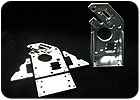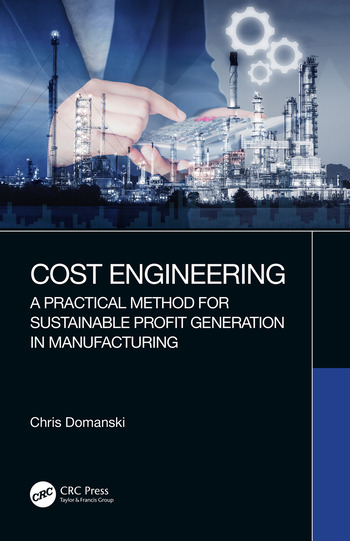Casting process changes four-piece assembly into a single component.

National Optronics produces high-precision machines for surfacing and finishing plastic eyeglass lenses in its Charlottesville, VA, manufacturing plant. These machines include blockers, tracers, edgers and surface generators. They are used at optical laboratories and stores such as Walmart and LensCrafters.
In 2008, National Optronics focused on reducing the manufacturing costs of a steel drill support being made in the plant’s machine shop. To make just one of these steel parts, four sections needed to be machined separately and then screwed together. “We figured there had to be a better way to make the part-perhaps even from another material,” says buyer Andy Irvine.
The part supports a drill inside the company’s 7E Edger, an automated three-axis patternless edger that trims polycarbonate, Hi-Index, CR-39 and Trivex eyeglass lenses to fit a wide range of frame styles. For rimless eyeglasses, the 7E drills tiny screw holes in the lenses. Its user-friendly software interfaces with related equipment and stores lens programs for each customer-programs that allow fast, easy cutting of duplicate lenses if the customer orders a second pair of glasses.
National Optronics consulted with Graphicast Inc., a contract manufacturer based in New Hampshire, about the steel drill support. Since 2006, Graphicast has been making parts for National Optronics using molds made from ZA-12, a zinc-aluminum alloy that is harder, stronger and more durable than aluminum, brass, bronze or plastic. The castings have a density approximately the same as cast iron and can include contours, variations in surface elevations, holes and other precise features.
Kirk Barrett, regional sales manager for National Optronics, studied the drawings for the four-piece assembly, and suggested National Optronics produce them as a single casting. After design discussions, the two companies agreed on a new design optimized for the casting process. Graphicast produced a prototype, then delivered the first actual drill supports in April 2009.
Since then, National Optronics has ordered four to five production runs per year, with 50 or 60 parts per run. Irvine says the new production method saves National Optronics about $11,000 a year due to lower costs for raw materials, machining and assembly.
Typical turnaround time from finished CAD design to production samples is only four to six weeks. The casting process is especially well suited for annual production runs of 200 to 20,000 parts.
In the process, automated casting machines fill each mold from the bottom up to minimize turbulence in the molten metal, increase density and reduce porosity. A process controller simultaneously controls fill rate, cycle time and temperature, yielding quality, repeatable parts at a relatively low cost per part. Finished drill support parts need less secondary machining than was required by the previous method of production.
The parts have a bright, corrosion-resistant finish of 63 microinches or less that requires no coating or other preparation. They can be chromated, plated, painted, powder-coated or finished with electro-coated acrylic or epoxy as necessary.
Another benefit of the graphite mold is it will not warp or corrode and can be stored indefinitely and reused.
For more information on graphite molds, call 603-532-4481 or visit www.graphicast.com.


